IMSML Website Article 11/2023: Resolution MSC.527(106) - International Code for the Safety of Ships Carrying Industrial Personnel (IP Code), Part 1 of 6
This resolution is the eighth found In Annex 1 of Malaysian Shipping Notice MSN 03/2023, made by the Maritime Safety Committee at its 106th Session (MSC 106) at the International Maritime Organisation (IMO). Note that MSN 03/2023 was issued by the Marine Department (MARDEP).
The summary provided by the MARDEP stipulates as follows: First, the IP Code concerns unified application of requirements to vessels that transport and accommodate industrial personnel working off-shore. Second, the new IPCode has provisions for training of industrial personnel, the safe transfer of personnel, life-saving appliances, and the carriage of dangerous goods. Third, if a ship has more than 60 persons on board, the carriage of the toxic products, low-flashpoint products and acids as cargo are not allowed. Fourth, the new regulations will enter into force on 1 July 2024.
The IP Code has five main parts, including an Appendix. Hence, this will be part one of a six part series on the IP Code.
[1] PART I - GENERAL 11/2023;
[2] PART II - GOALS AND FUNCTIONAL REQUIREMENTS, see IMSML Website Article 12/2023;
[3] PART III - REGULATIONS, see IMSML Website Article 13/2023;
[4] PART IV - ADDITIONAL REGULATIONS FOR SHIP CERTIFIED IN ACCORDANCE WITH SOLAS CHAPTER I, see IMSML Website Article 14/2023;
[5] PART V - ADDITIONAL REGULATIONS FOR CRAFT CERTIFIED IN ACCORDANCE WITH SOLAS CHAPTER X, see IMSML Website Article 15/2023;
[6] APPENDIX - MODEL INDUSTRIAL PERSONNEL SAFETY CERTIFICATE, see IMSML Website Article 16/2023.
Today’s article will be on the ‘General’ provisions in PART of the IP Code. There will be three specific headings: Goal, Definitions as well as Certificate and Survey.
Paragraph 1 - Goal of the IP Code
The deal mainly with the safe carriage of industrial personnel on ships and their safety during personnel transfer operations. The IP Code addresses any risks present which are not adequately mitigated by the applicable safety standards in the International Convention for the Safety of Life at Sea (SOLAS), 1974.
Paragraph 2 - Definitions in the IP Code
The Code provides express definitions for eight chosen words or phrases:
[1] ‘Carriage’ - transportation, accommodation, or both;
[2] ‘Essential systems’ - specifically refer to systems in SOLAS Regulation II-2/21.4;
[3] ‘HSC Code’ - means the International Code for Safety for High-Speed Craft 2000, as adopted by Resolution MSC.97(73) (as amended);
[4] ‘Industrial personnel’ - means all persons transported or accommodated on board for the purpose of offshore industrial activities performed on board other ship and/or off shore facilities;
[5] ‘IP area’ - is every area or space where IP are normally intended to stay during the voyage or are allowed access to;
[6] ‘Offshore industrial activities’ - means the construction, maintenance, decommissioning, operation or servicing of off shore facilities. Note that this also includes, but is not limited to exploration and exploitation of resources. These may be renewable or hydrocarbon energy sectors. Even aquaculture, ocean mining or similar activities;
[7] ‘Personnel transfer’ - means the full sequence of the operation of transferring personnel and their equipment at sea to or from a ship to which this Code applies and from or to another ship or an offshore facility;
[8] ‘SOLAS’ - means the International Convention for the Safety of Life at Sea 1974 (as amended).
Paragraph 3 - Certificate and Survey
There must be a valid ‘Industrial Personnel Safety Certificate’ on board any ship which is covered by the IP Code, see Paragraph 3.1. This certificate shall be issued after an initial or renewal survey of the ship which complies with the requirements of the IP Code, see Paragraph 3.2. The certificate can be issued by regulator or organisations recognised by SOLAS Regulation XI-1/1, see Paragraph 3.3. The certificate shall be drawn up in a form corresponding to the model given in the IP Code, see Paragraph 3.4 (Note that the Appendix is covered in IMSML Website Article 16/2023, Part 6 of 6).
The primary language for the certificate is English. However, where this is not the case, French or Spanish is allowed, or a translation into one of these languages, see Paragraph 3.4. The validity of the certificate, in particular survey dates and endorsements shall be harmonised with the relevant SOLAS certificates in accordance with SOLAS Regulation I/14 or Regulation X/3.2, as appropriate, see Paragraph 3.5. The certificate and the Record of Equipment shall be issued in addition to the relevant certificates required by SOLAS Regulation XV/5.1.1, see Paragraph 3.6.
Thank you for reading IMSML Website Article 11/2023
Stay tuned for the next IMSML Website Article 12/2023: Resolution MSC.527(106) - International Code for the Safety of Ships Carrying Industrial Personnel (IP Code), Part 2 of 6 - PART II of the IP Code - GOALS AND FUNCTIONAL REQUIREMENTS
Signing-off for today,
Dr Irwin Ooi Ui Joo, LL.B(Hons.)(Glamorgan); LL.M (Cardiff); Ph.D (Cardiff); CMILT
Professor of Maritime and Transport Law
Head of the Centre for Advocacy and Dispute Resolution
Faculty of Law
Universiti Teknologi MARA Shah Alam
Selangor, Malaysia
Wednesday, 30 August 2023
Note that I am the corresponding author for the IMSML Website Articles. My official email address is: uijoo310@uitm.edu.my
